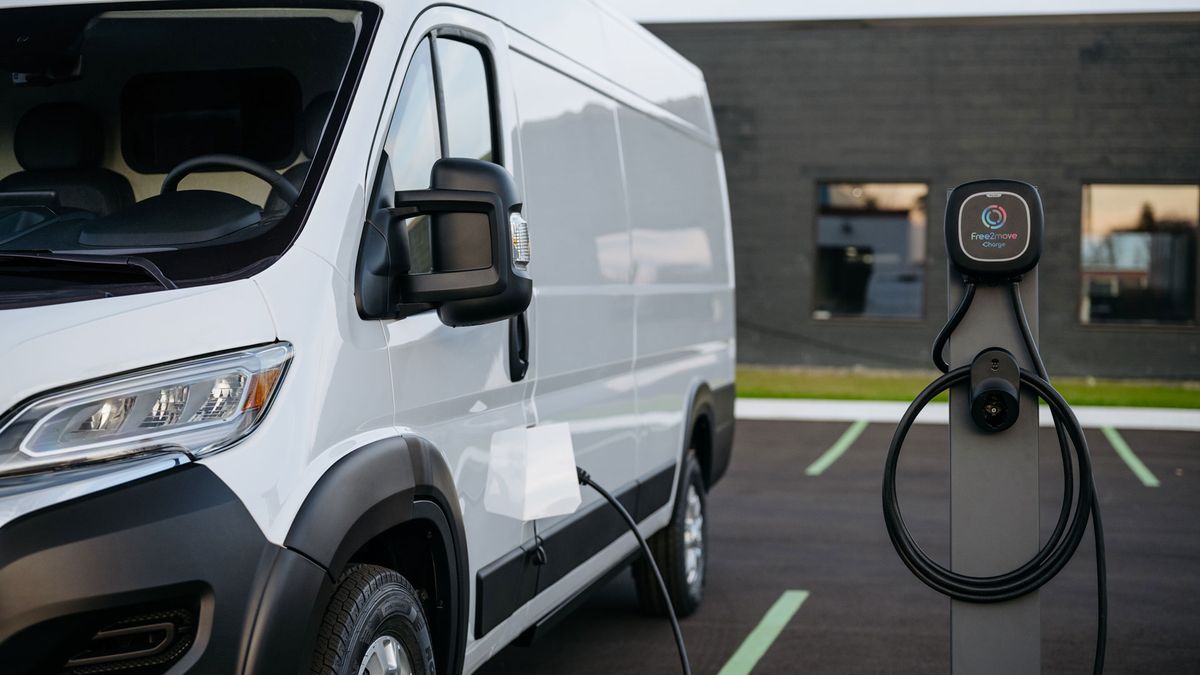By this point, you’ve likely encountered the adorable electric “bread truck” from Rivian, known as the Rivian Delivery Van, cruising through your local streets. You may have also spotted Ford’s E-Transit out in the wild. In the near future, you might see contractors arriving in a Mercedes eSprinter or RAM ProMaster EV. The shift to electric delivery vans and other commercial vehicles is reshaping the way businesses and fleets function.
What does this shift mean for us? It translates to reduced noise levels, cleaner air, and happier delivery personnel. However, commercial EVs are not just enhancing urban environments; they are also becoming the preferred choice for do-it-yourself camper conversions and recreational vehicle manufacturers. While a few all-electric RV models have already been introduced, such as the Winnebago eRV2, Grounded G1, and Thor Vision Vehicle, the question remains: Are commercial EVs truly ready for the #vanlife movement? Let’s delve into this further.
A Competitive Landscape
Rivian’s Commercial Van, previously exclusive to Amazon, was the pioneer in this space. It became available to other businesses last November, offering two sizes – 500 and 700 cu.ft – with payloads of 2,734 and 2,513 lbs and ranges of 161 and 153 miles, respectively. Additionally, Amazon has access to a 900 cu.ft version with a range of 120 miles. Pricing varies since it is exclusively targeted at fleet operators.
Following suit, Ford introduced the E-Transit van, which closely resembles its Internal Combustion Engine (ICE) Transit counterpart. The E-Transit comes in various configurations, including cargo van, cutaway, and chassis cab models, with low, medium, and high roof options, and regular, long, and extended lengths. It offers a maximum range of 126 miles, a payload capacity of 3,880 lbs, and starts at $45,995. Moreover, it features optional 120V outlets capable of delivering up to 2.4kW of power.
Mercedes-Benz recently unveiled the second-generation eSprinter van, which was not previously available in the US. This model is offered in a single configuration (23.3 ft long wheelbase and high roof) with a range exceeding 200 miles. With a payload capacity of 2,624 lbs, the pricing starts at $71,886. Similar to its ICE counterpart, the eSprinter incorporates many of Mercedes’ safety and driver-assistance technologies, along with the latest MBUX infotainment system, albeit without high-power 120V sockets.
RAM is set to launch the ProMaster EV van around 2025. This electric variant will closely resemble its ICE sibling, available in five configurations with a payload capacity of 3,020 lbs and a range of 162 miles. While details about the inclusion of high-power 120V outlets, akin to Ford’s E-Transit, remain unclear, one model will feature a roll-up door. The pricing is yet to be determined but is anticipated to commence around $69,000.
Embracing Tranquility
The transition to commercial EVs is not merely a trend; it holds significant implications. By observing closely, you’ll notice that our neighborhoods can be quite noisy at times, even in areas distanced from major thoroughfares. Embracing commercial EVs promises a quieter environment and reduced air pollution. The adoption of electric delivery vans and commercial vehicles marks just the beginning. Imagine the impact if taxis, buses, and even garbage trucks were to go electric as well.
Having recently experienced driving Mercedes’ eSprinter in Long Beach, CA, I was genuinely impressed. These electric vans offer a notably enhanced driving experience compared to your typical U-Haul rental van. They are remarkably comfortable, quieter, smoother, and easier to maneuver than their ICE counterparts. The increased deployment of such vehicles is bound to significantly decrease driver fatigue, leading to happier employees and more amiable delivery services.
Unleashing RV Potential
Vehicles like the Mercedes-Benz Sprinter, Ford Transit, and RAM ProMaster have long served as popular platforms for DIY camper conversions and RV manufacturers. With the Mercedes eSprinter boasting a range exceeding 200 miles, a realm of new possibilities unfolds. This is particularly significant considering that most campgrounds offer 240V RV power hookups capable of charging modern EVs overnight (via level 2 AC charging).
The primary allure of commercial EVs for #vanlife lies in their high-voltage battery. Conventional camper vans and smaller RVs traditionally relied on AGM (lead-acid) batteries and propane for powering lights, appliances, heating, and cooling. Modern setups have transitioned to all-electric systems utilizing energy-dense LFP (lithium iron phosphate) batteries.
These auxiliary “house batteries” are typically charged using the internal combustion engine (while driving), optional solar panels (when off-grid), or shore power by connecting to the grid (at campgrounds). While functional, these house batteries are cumbersome and occupy space within the camper or RV. Commercial EVs present an intriguing proposition with their high-voltage batteries.
By harnessing power from the high-voltage battery – as demonstrated by Ford’s E-Transit (through dual 120V sockets delivering up to 2.4kW of power) and Ford’s F-150 Lightning (offering up to 9.6kW of power, including a 240V outlet) – camper vans and compact RVs built on commercial EV platforms can forego the need for a separate house battery. Enabling the onboard vehicle charger to support solar panels creates a comprehensive solution.
Progress in Sight
While the adoption of commercial EVs for DIY camper conversions and RV manufacturing has faced challenges, primarily relating to range and access to high-voltage battery power, advancements are evident. Mercedes’ eSprinter is addressing the range concern with over 200 miles of range, while Ford’s E-Transit is making progress by offering 2.4kW of power through dual 120V outlets. The resolution of these issues remains unclear for RAM’s ProMaster EV.
Nonetheless, there is optimism on the horizon. Following my exhilarating experience with the eSprinter in Long Beach, CA, Mercedes hinted at enabling access to power from the high-voltage battery in the future. Additionally, Rivian, known for its R1T electric pickup and R1S electric SUV boasting up to 410 miles of range, may extend similar advancements to its Commercial Van, potentially broadening its range and accessibility beyond exclusive fleet use.
It won’t be long before you can fully embrace the all-electric #vanlife lifestyle to its fullest extent.
